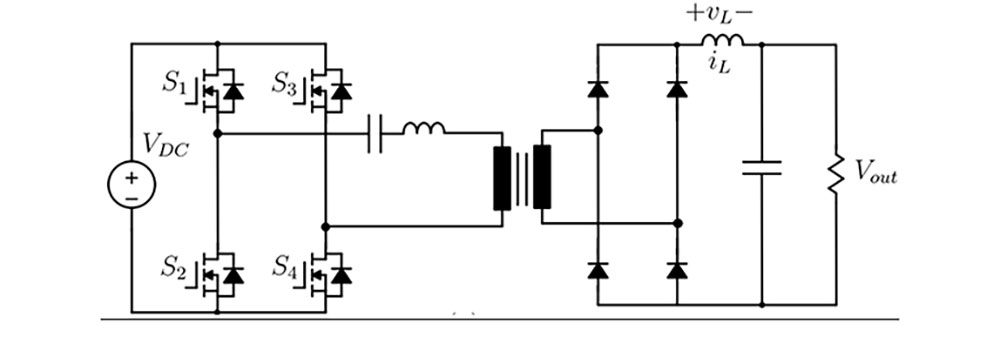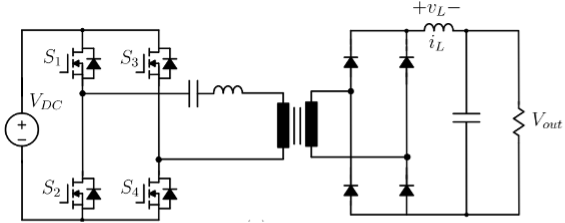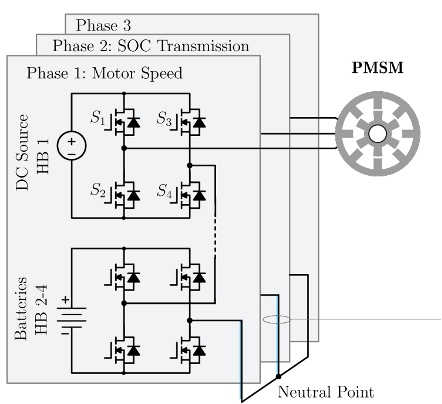Power Converters and Talkative Power Conversion in Distributed Generation

The article explains how talkative power conversion works and its benefits in enabling efficient use of renewable energy sources. It also provides an overview of different types of power converters and their applications in distributed generation.
Distributed power generating systems are designed to efficiently extract and use renewable energy because they are randomly distributed and have intermittent characteristics.
Distributed generation increases the penetration of renewable energy sources by improving network performances, such as lowering line losses, enhancing voltage profiles, and reducing overload.
Power converter-interfaced resources, such as battery banks, electric vehicle charging stations, wind turbines, solar panels, and electric motors, are steadily making their way into current energy networks. To oversee and administer these resources connected to power converters, communication infrastructure (COM) is also necessary.
What are the difficulties faced by conventional power line communication?
Conventional power line communication (PLC) systems include the information in signals superimposed over the same channel as utilized for power delivery.
It is still necessary to have a modem and passive inductive or capacitive coupling for traditional PLC systems. Furthermore, interference may result from the use of a PLC in conjunction with a power electronic (PE) converter.
Time Sharing Power Line Communication
To solve the aforementioned issue, sequential PLC is suggested and transmits data during the power-off interval. This method, known as time sharing in the COM world, involves some hardware work but not as much as with a conventional PLC. PLCs with time sharing work well over short distances.
The Idea of ‘Talkative Power Conversion’
Power converters don't need any extra hardware or hardware modification to transport data straight to the associated grid. It is possible to incorporate data into the pulses by altering the switching properties. This system was known as Talkative Power (TP).
The article refers to this process as Talkative Power Conversion (TPC) since it occurs in the power converter itself without the need for additional hardware. TPC is also known as a zero-additional-hardware PLC.
- Power and Signal Multiplex Transmission (P&SMT)
- Power and Signal Synchronous Transmission (PSST)
- Power/Signal Dual Modulation (PSDM)
Are some of the terms used by other researchers to refer to it from a signal perspective. However, none of these definitions are comprehensive and accurate enough to satisfy the requirements of PLC.
Application of Talkative Power Conversion
- Both isolated converters and non-isolated converters have used TPC modulation techniques.
- TPC modulation was used for several buck and boost converters.
- Phase shift modulation was also studied for a full-bridge converter.
- TPC modulation has a wide range of uses in wired and wireless systems.
In terms of wired communication, it has been used with battery management systems (BMS) and switching reluctance generators/motors. This makes it simple to transmit signals for condition monitoring, fault detection, and improved efficiency.
In terms of wireless communication, TPC has been used in wireless charging stations for electric vehicles and visible light communication, greatly expanding the connections of electric devices and minimizing the need to install signal and power lines.
Talkative Power Conversion in Power Electronic Converters
A primary way to categorize TP converters is by their output:
- DC/DC
- DC/AC
Based on the topology of TP converters, namely the availability of the transformer, DC/DC TP converters fall into two basic categories:
- Isolated converters, which often use the full-bridge topology
- Non-isolated or transformerless converters
Non-Isolated DC/DC TP Converters
The TP converters are connected in parallel to the DC bus. The DC bus serves as a common channel for the transfer of both power and data. The two main roles of TP converters with regard to power flow are load splitting and source splitting, which stand for load-side TPC and source-side TPC, respectively.
The ripple needs to be resistant to interference to provide a reliable result. But in certain PE topologies, the bus side ripple wobbles significantly when input voltage or load changes, which reduces the reliability of the PLC system. As a result, it is important to evaluate each DC/DC topology's working circumstances.
Single Active Full-Bridge-Based TP Converters
Fig. 1 schematically depicts the implementation of a talkative full-bridge converter.

Fig. 1 Schematic circuit of Full-bridge TP converter. Source: IEEE Open Journal of Power Electronics
Traditional digital modulation strategies such as PWM-Frequency-Shift Keying (FSK) PWM- Phase-Shift Keying (PSK) can be flexibly implemented in full-bridge converters. In this case, good power quality is best achieved via PWM-PSK.
Three-Phase AC/DC TPC
Inverter-fed motor systems have been the subject of numerous studies on PLC as early as 2010. The majority of these studies developed energy harvesting and communication on motor cables via coupling interfaces and PLC modems.
The main challenges with this system include torque ripples and high-frequency noise.
On the other hand, TP in AC/DC converters can be used in many situations, exempting coupler’s design and maintenance. Only a few studies on such coupler-less communication in a three-phase AC/DC converter have been done.
Cascaded H-Bridge TPC
Cascaded H-Bridge (CHB) converters could be a good way to charge electric vehicles, make smart transformers, and make battery packs. They do this by cutting down on the number of energy transfer steps needed in medium voltage systems.
To further enhance the level of optimization in EVs based on CHBs, TPC—referred to as CHB-TPC, is used for battery State of Charge (SOC) balancing and motor speed management at a maximum data rate of 600 b/s.
Each phase contains four H-Bridges (HBs), of which one is connected to a DC source and is in charge of generating the data signal, while the other three are connected to batteries, as shown in Fig. 2.
A converter has been equipped with FSK-based level-shifted PWM to achieve TP modulation. The resulting modulation has high order frequency components that affect the phase current waveform. Samples of the phase current make recovering such data simple.

Fig. 2 Schematic circuit of CHB-TPC for EV applications. Source: IEEE Open Journal of Power Electronics
Summarizing the Key Points
- Talkative Power Conversion enables power converters to transport data without additional hardware.
- It can improve communication in distributed power generating systems, enhancing the use of renewable energy sources.
- Different types of power converters, including isolated and non-isolated converters, can use talkative power conversion modulation techniques.
- It can overcome challenges faced by conventional power line communication systems, such as interference from power electronic converters.
- Talkative power conversion has a wide range of applications in wired and wireless communication systems, including battery management systems, electric vehicle charging stations, and visible light communication.
Reference
Liserre, Marco, Hamzeh Beiranvand, Yang Leng, Rongwu Zhu, and Peter A. Hoeher. “Overview of Talkative Power Conversion Technologies.” IEEE Open Journal of Power Electronics 4 (2023): 67–80. https://doi.org/10.1109/ojpel.2023.3237709.